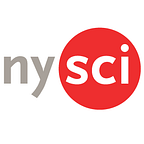STEM Profiles: Anzar Abbas and the Curious Brain
Our newest STEM profile features Anzar Abbas, a student in neuroscience at Emory University researching resting brain patterns through the use of fMRI, a technology for mapping brain activity. (Read the entire STEM Profiles series here.) As an alumnus of the AAAS Mass Media Fellowship, Anzar is a strong advocate for popular science communication. Here, he writes about his work, and why he’s no longer a history student.
To me, science is just about being curious.
I’m a Ph.D. student in neuroscience studying patterns in the brain and how they help the brain do its job.
Funnily enough, my impulse to become a scientist came about when I was a student of history. Learning about the role scientists and philosophers played in their societies inspired me to be more like them.
I realized that their work didn’t just advance technology, but it brought about progress in their cultures.
People in scientifically advanced civilizations were sharper, more interested in finding out what the human intellect was capable of. There was no Large Hadron Collider in 17th century Sicily. But the scientists were still fostering a curiosity within their societies that encouraged people to be more creative artists, more informed politicians, and fairer citizens.
Regardless of the century, the motivation for being a scientist hasn’t changed much. It doesn’t matter if it’s Copernicus spending night after night poring over the movement of the planets, or Newton locking himself in his lab not to see sunlight for days, or even a thousand physicists gathering together to listen to two black holes colliding with the help of giant sensors — the common denominator here is intellectual curiosity. They are all curious about the world around them. They know they’re on the verge of discovery, and to them, and to me, nothing could be more exhilarating.
Science isn’t about being good at math, or getting straight A’s on your biology tests. You don’t have to have a Ph.D. and a professor’s office at a university to perform science.
To be a scientist is to be curious about the natural world around you. Kids are scientists when they turn over a rock to see what’s underneath or examine a bird’s feather. You’re a scientist when you’re skeptical about the street magician performing “magic”. And the best thing is that science doesn’t exclude anyone, because we are all naturally curious, and we should all be naturally skeptical.
Curious folk seek answers. And a scientist goes to great lengths to find those answers with paramount accuracy. That’s where the Large Hadron Collider comes in … and the magnifying glass, the microscope, telescope, beaker, pipette, the lab notebook.
We test and retest, we collaborate with peers, challenge our colleagues, demolish the fakes. And when it all comes together, the entire scientific process turns out to be this beautiful machine that churns out knowledge and advancements in human intellect. And raises more questions.
And it’s all driven by a simple curiosity.
Check out other STEM Profiles in our series:
· Keith Appleby, an architect deep into the tech world who also loves art.
· Mike Nguyen, a mathematician and former football star.
